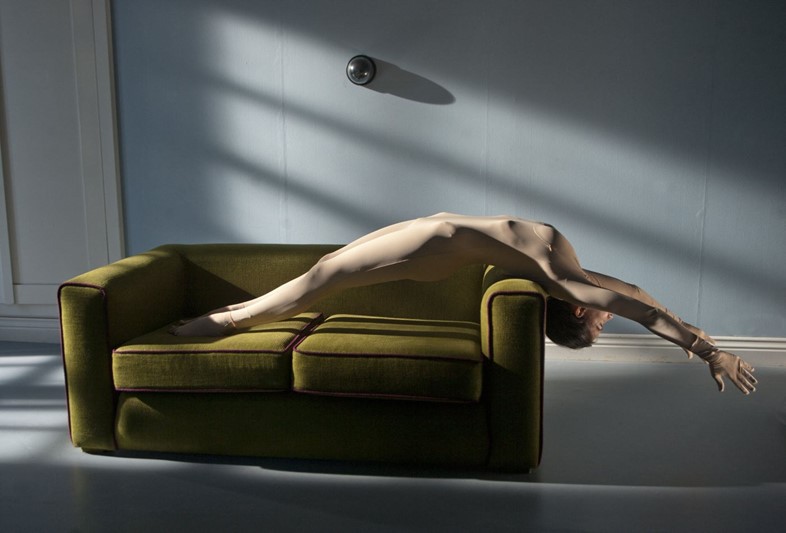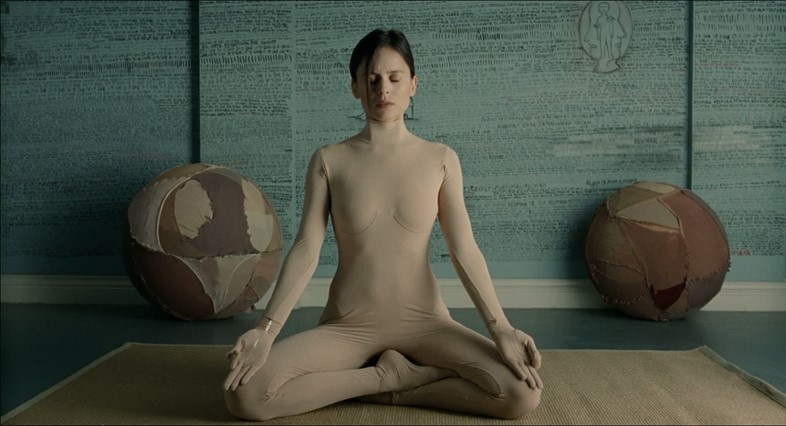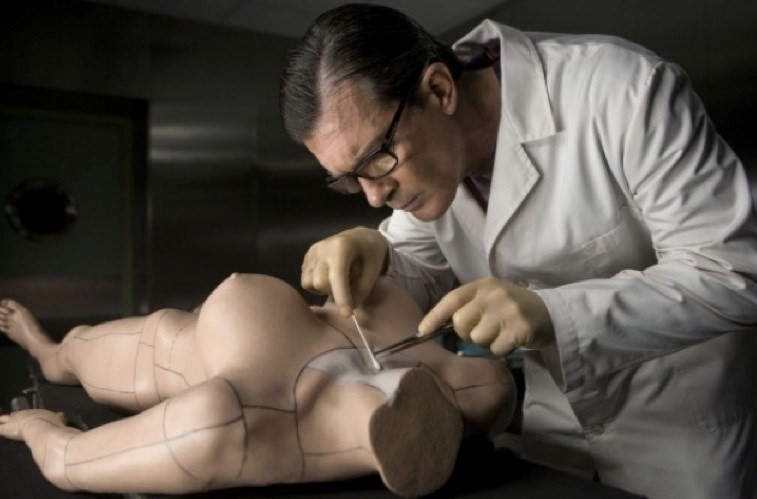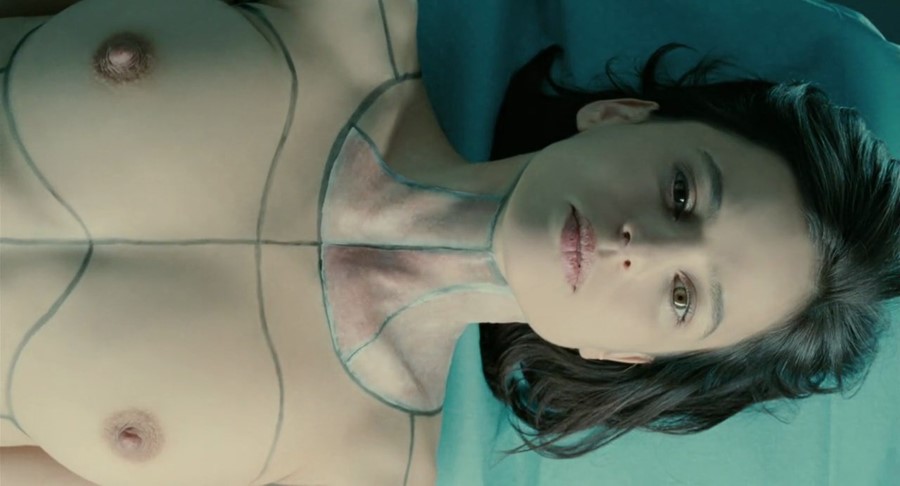We take notes from Almodóvar’s eerily seductive 2011 thriller, a masterclass in sartorial symbolism and artistic referencing
Pedro Almodóvar is a director whose name has become synonymous with the use of fashion and art as symbolic gestures. Equally, he is someone who has never shied away from challenging the subjects of constructed gender identity, sex and desire in his work. Inspired by Thierry Jonquet’s French novella Mygale, The Skin I Live In is a capsule collection of these themes, pushed to the extreme in a tingling and eerily seductive manner. The film’s protagonists assume the unsettled forms of charismatic plastic surgeon and part-time psychopath Robert Ledgard (a ‘Dr. Frankenstein encounters Dr. Frederic Brandt’ persona, played by frequent Almodóvar collaborator Antonio Banderas) and Vera/Vicente (Elena Anaya/Jan Cornet), who Ledgard mistakenly concludes is responsible for the suicide of his daughter.
In a perturbing twist of dream sequencing, it is steadily revealed that Dr. Robert – in a clear disregard for the Hippocratic oath – exacted surgical revenge by imprisoning Vicente and performing a male-to-female gender reassignment operation on the unwilling patient, detaining him in a physical form that will forever remain an alien entity. The resulting character of Vera becomes a fleshy, alabaster surface to be experimented upon by Ledgard, her body coated in splices of ‘GAL’, an artificial super skin resistant to mutilation. Vera’s consequential internal and external mêlée to come to terms with who she ‘is’, unfolds via Almodóvar’s rich and masterful referencing and José Luis Alcaine’s silken cinematography; with clothing emblematically used to represent a battle with the self.

1. Wear stretch fabric like a second skin
It’s arguable that there are only a select few circumstances in which stretch fabric can transcend into the realm of elegant, with Azzedine Alaïa being the material’s master manipulator, cutting it meticulously to flatter and accentuate. However, in the second collaboration since Almodóvar’s 1993 film Kika, it was Jean Paul Gaultier who the director summoned to dream up the elastic costuming for The Skin I Live In. Inspired by a houndstooth body stocking featured in his A/W91 collection, Vera is dressed similarly in neck-to-toe form-fitting suits: one black (complete with surgical mask accessory) and one nude; both displaying subtle elements of Gaultier’s signature nods to corsetry. Acting as compression suits for Vera’s new synthetic epidermis, Dr. Robert callously commands her to “get used to wearing it all the time, like a second skin”.

2. Assume warrior pose
These suits really come into their own when worn for Vera’s new gymnastic hobbies. Locked in an isolated room with nothing but a Panasonic flat screen television and an Alice Munro novel for company, Vera lounges on a beanbag, wistfully flicking through channels depicting an outside world she no longer inhabits. “There’s a place where you can take refuge – a place inside you. A place to which no one else has access. A place where no one else can destroy”, says a tranquil yoga instructor on the monitor before her. So, Vera requests an updated reading list from Ledgard and takes up the practice as an escape for her turmoil, Almodóvar intelligently using yoga as a symbol for the relationship between the physical body and the identity concealed within it.

3. Become completely obsessed with Louise Bourgeois
With her yoga studies well underway, Vera also decides to take up an avid interest in the arts; particularly the work of Louise Bourgeois. In some of the finest referencing in film, the artist’s infamous sculptures of contorted bodies – voodoo doll-like figures constructed from amalgamated pieces of old cloth dissected and sewn back together – are used as reflections upon Vera’s own mental and physical being, appearing as images on the Panasonic screen and in her reading material. Vera is also provided with a plethora of Chanel cosmetics to experiment with, but this is of course rejected. Instead, eyeliner is used as a drawing tool, with the blank walls of her high-end prison becoming a canvas for copied kohl illustrations of Bourgeois’ Femme Maison series.
4. Reject florals
Gender theorist Judith Butler writes: “the misapprehension about gender performativity is this: that gender is a choice, or that gender is a role, or that gender is a construction that one puts on, as one puts on clothes in the morning.” In The Skin I Live In, Almodóvar symbolically uses floral dresses as a representation of the manner in which gender is societally assigned from birth and the rejection of this practice. In a frenzied scene soundtracked by piercing violins, Vera furiously rips up all the flower-patterned garments Robert has left on the bed after enforcing a new rule: “you will no longer be known as Vicente, but Vera!” Leaving the dresses in pieces all over the floor, she yanks a hidden nozzle from the wall, sucking up every last scrap.

5. Work in retail
Prior to Vicente’s capture and ensuing transformation, we learn that he worked in his mother’s second-hand womenswear shop, amidst a jumble of clothes and bijou accessories. Flashback scenes reveal him tenderly dressing a straw mannequin as part of the window display, caressing its grassy physique. Holding up a dress, he offers it to his friend and colleague Cristina as a gift for her to wear – but she isn’t keen. “If you like it so much, why don’t you wear it yourself!” she jokes. But six years later, in the final scene, Vera – having succeeded in escaping the clutches of Dr. Ledgard’s latex-gloved hands – returns to the shop to seek refuge. And as ironic proof to Cristina that Vera is in fact the missing Vicente, she appears to her wearing that very same dress.
